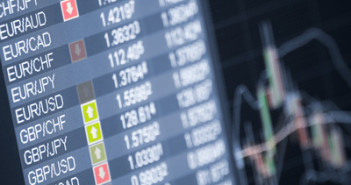The escalation of the geopolitical situation in Eastern Europe that started yesterday afternoon has failed to abate, causing investor sentiment to continue its collapse as market participants rotate into safe-haven assets this morning. Yesterday’s warning from Poland’s foreign minister that the risk of Russia invading Ukraine has increased as Russia amasses military troops in battle formation along the Ukrainian border, in addition to the reports Putin was readying counter-sanctions against the West, culled risk appetite and sent global equities lower, with the resulting movement out of high-yielding assets yet to find a floor. The long end of the US treasury curve has consequently seen investors flocking to it, with the yield on the 10-year treasury tumbling to 2.44% during the overnight session. Safe-haven currencies have also seen a strong bid tone heading into the North American open, with the DXY hitting levels not seen since the fall of last year.
Turning our attention across the Atlantic, equity bourses have not been immune to the dispersal of risk appetite, with the majors all in the red by over 1% midway through the session. Not helping matters in the European Union was the fact that the financial backstop of the zone saw manufacturing orders decline by 3.2% compared to May, which had also seen a 1.6% drop from the month prior. The soggy industrial order number is likely a reflection of a pause in orders as the geopolitical situation in Eastern Europe festers, but also confirms the Bundesbank’s caution that GDP growth in Germany stalled during Q2.
Elsewhere in the common-currency bloc, the third largest economy saw its GDP growth contract for the second consecutive quarter, the technical definition of a recession. Expectations were for Italy to see a modest growth rate of 0.2% to make up for the contraction of 0.1% in the first quarter, yet economic activity was unable to gain traction, with real growth getting slashed by 0.2% on a q/o/q basis. The result of the negative macro-economic releases for the zone is one that has seen traders look to shed some exposure to the Euro, with the common-currency slipping back into the mid-1.33s against the big dollar.
Heading into the North American open, S&P futures have been unable to spark a turnaround as geopolitical pessimism telegraphs stocks in the US will see another red start to their trading day. The two tier-one data points for North American markets that were just released were trade balance figures in June for both the US and Canada. The US saw its trade deficit narrow by more than expected as imports fell and exports remained fairly steady; the overall trade deficit shrank to $41.5bn, the smallest deficit since January, and better than the $44.7bn that had been expected. While export growth was little changed and reflects sluggish global demand, the drop in imports (a result of lower petroleum imports as the US moves closer to energy independence) at the end of Q2 should help add to GDP figures in the coming revisionary estimates.
North of the 49th parallel, Canada also saw a surprise trade balance figure, with a boost in exports propelling the country into a surplus position of $1.9bn. The Loonie managed to claw back some of its overnight losses against the dollar as June’s surplus represents only the fifth time (May’s deficit was revised into a surplus position) the country’s trade balance has been in the positive since the beginning of 2012, though the Loonie’s gains against the USD have been muted given the corresponding digestion of the US trade balance figures. USDCAD is currently pivoting in the mid-1.09s after looking ready to make a test of the 1.10 handle prior to this morning’s data releases, with attention for Loonie traders now turning to Canada’s job numbers that will be released on Friday.
Further reading:
the financial backstop of the zone saw manufacturing orders decline by 3.2%
NZDUSD Remains At Risk Of Further Declines



